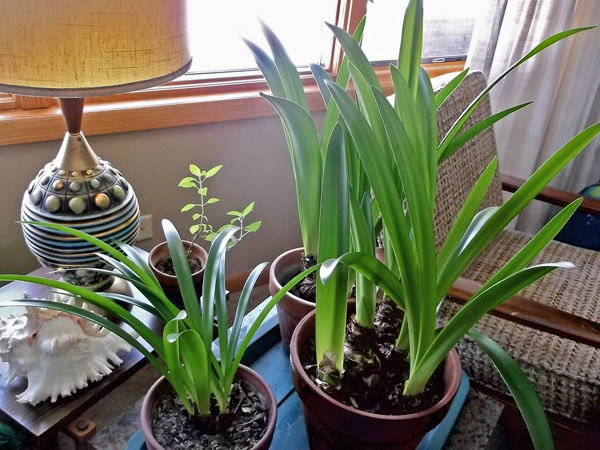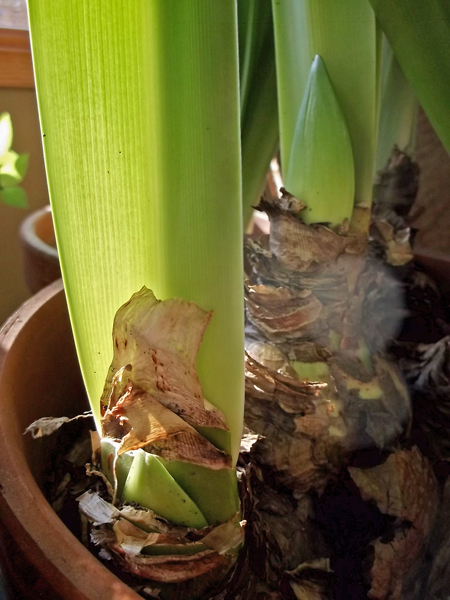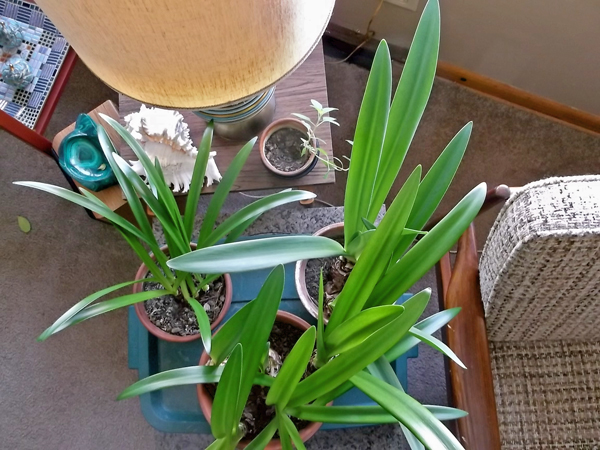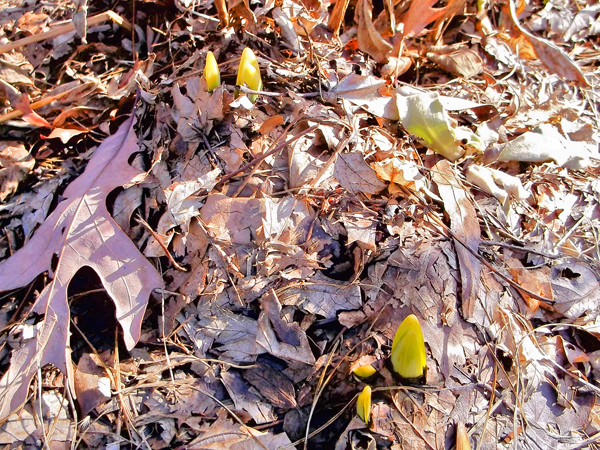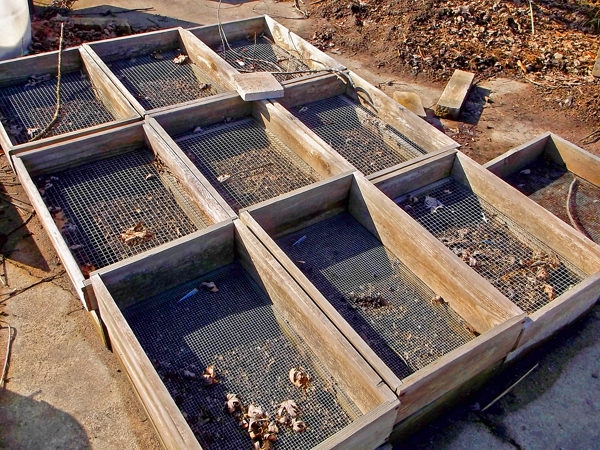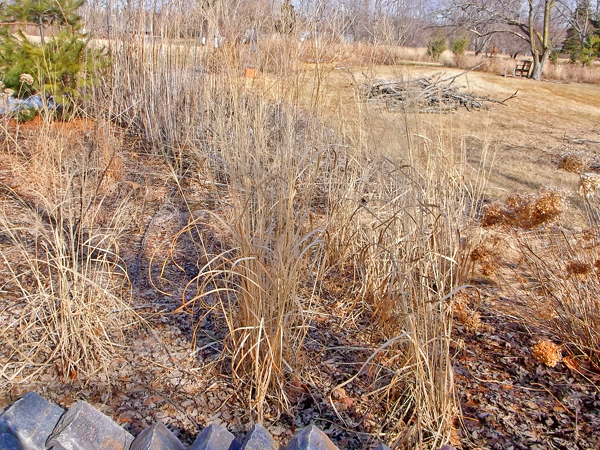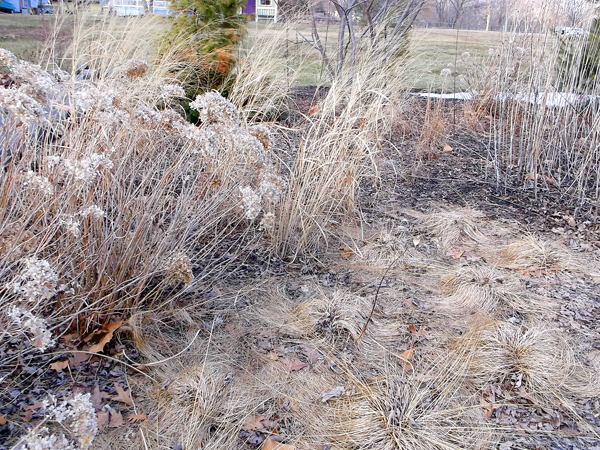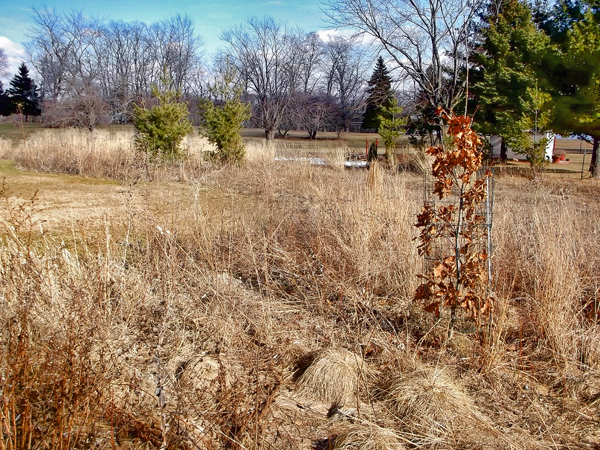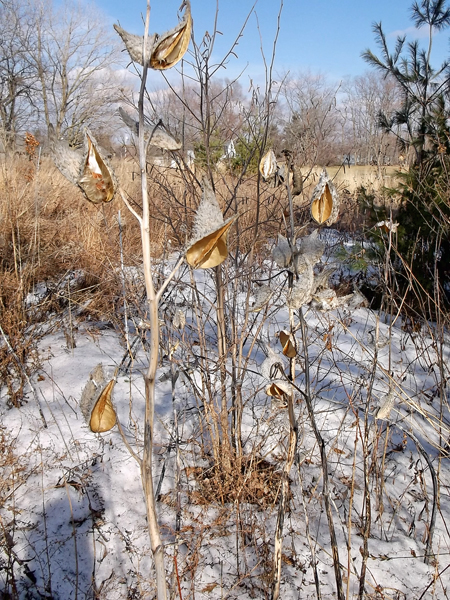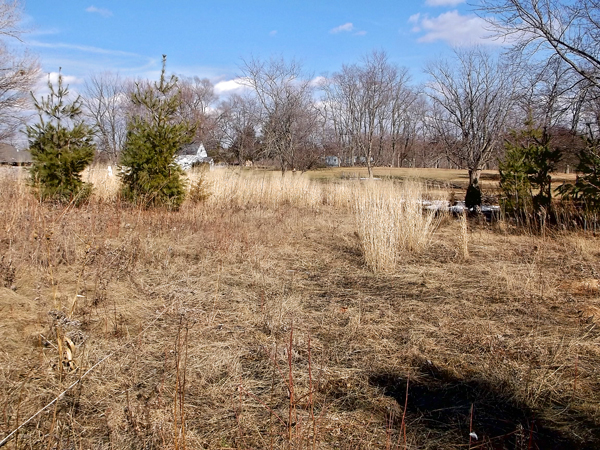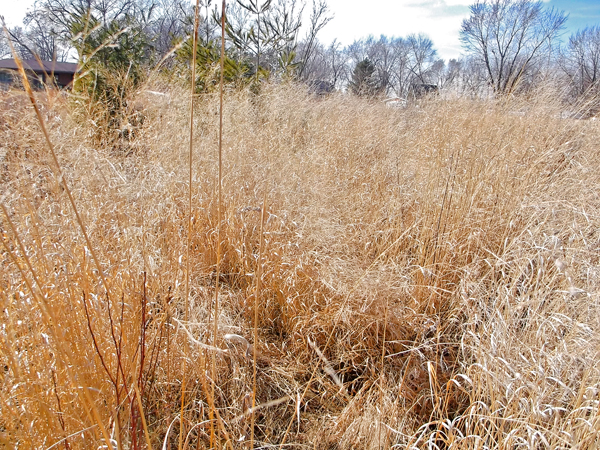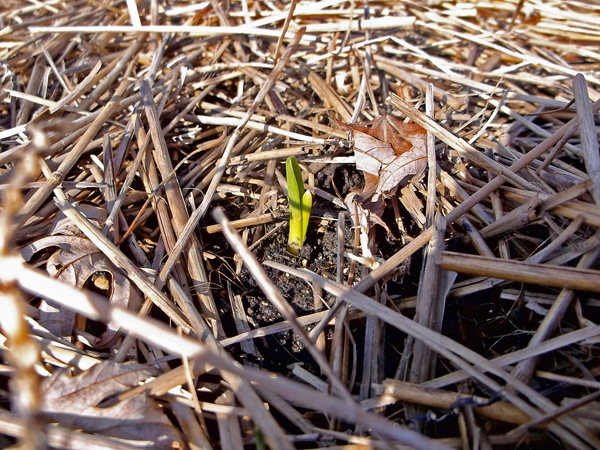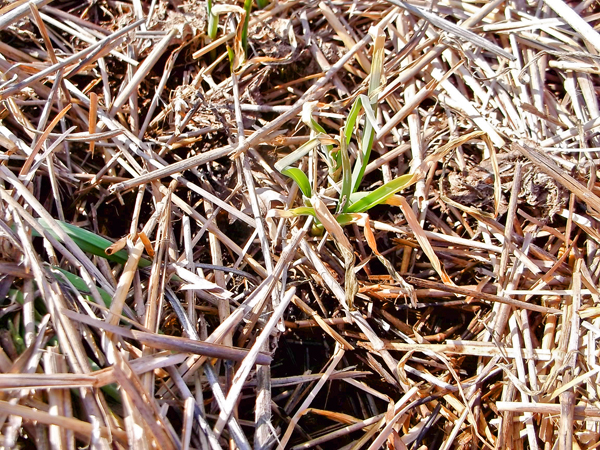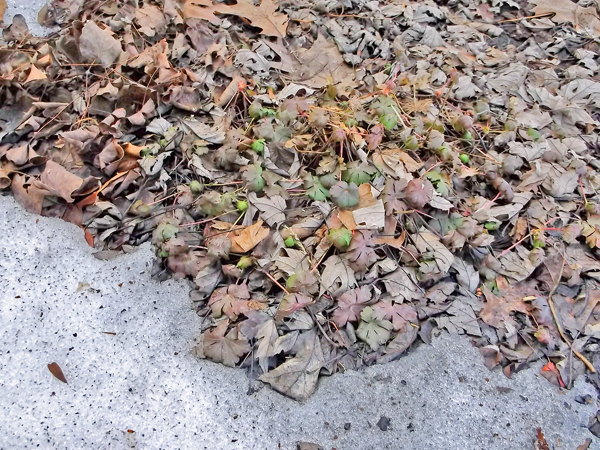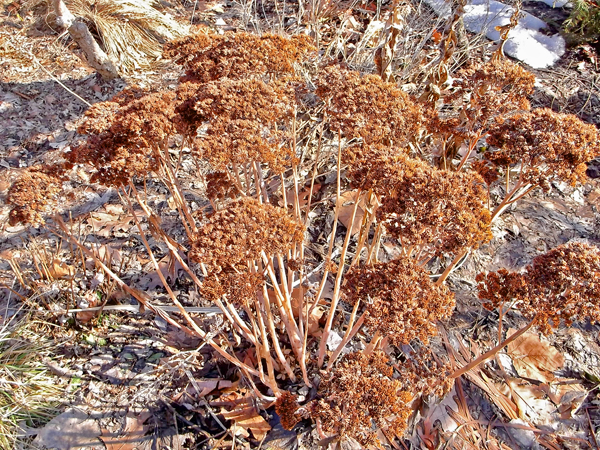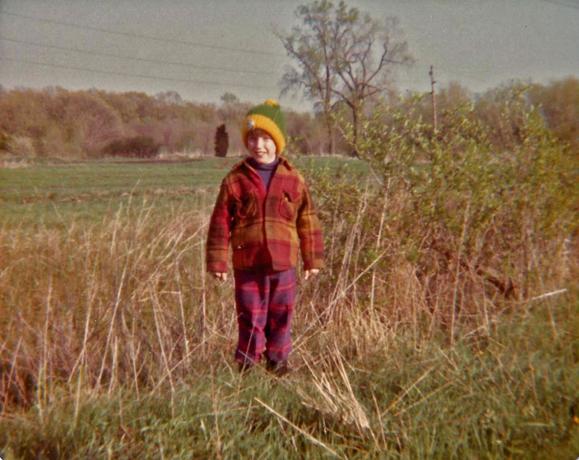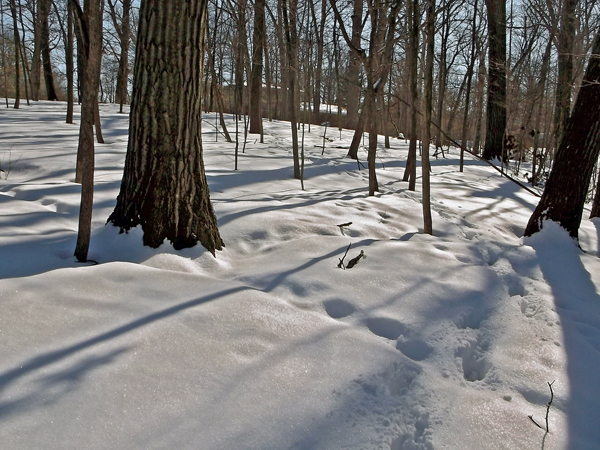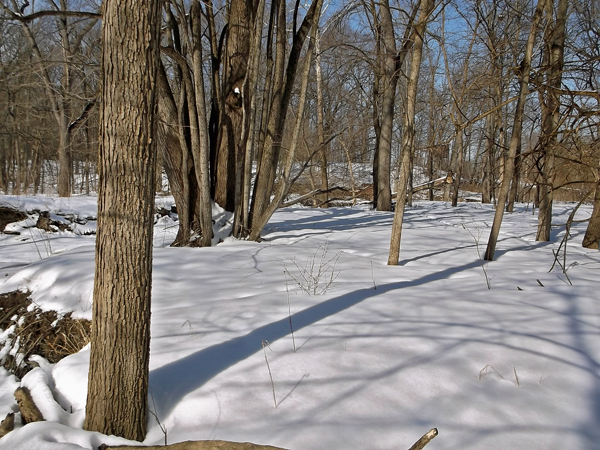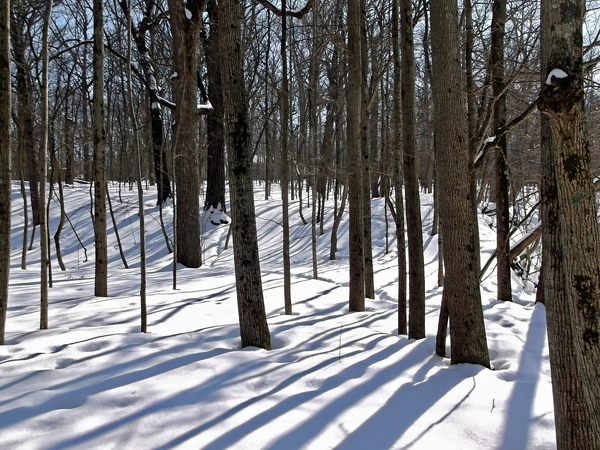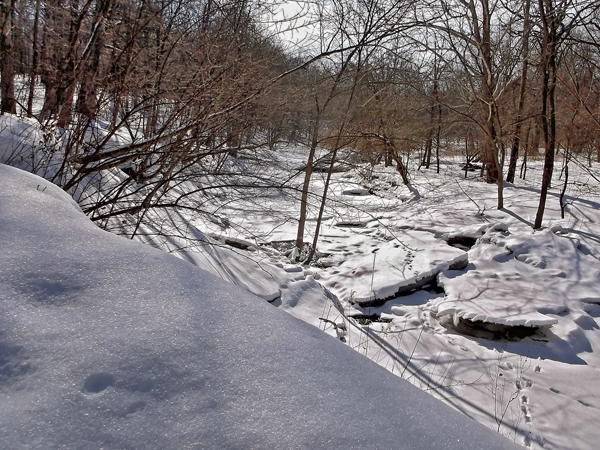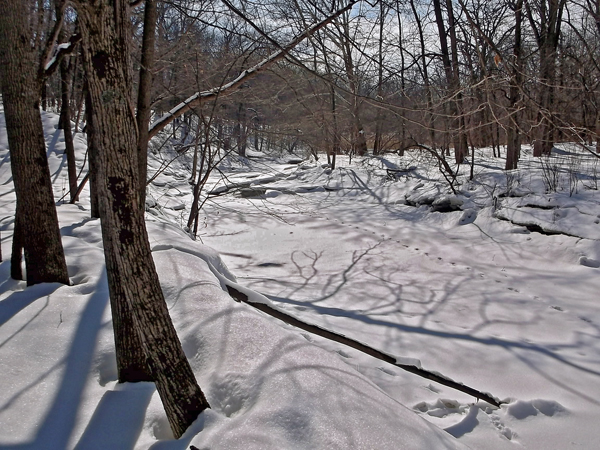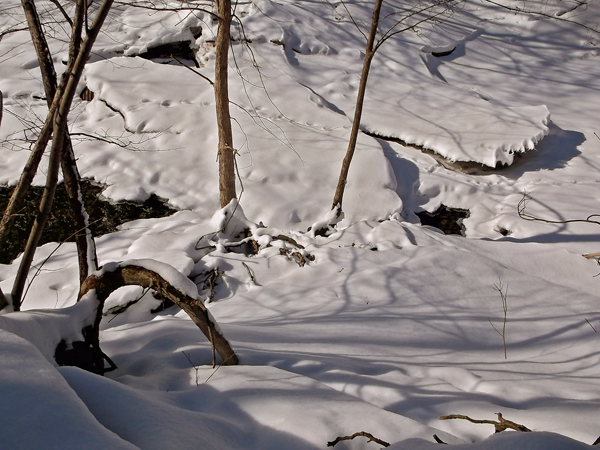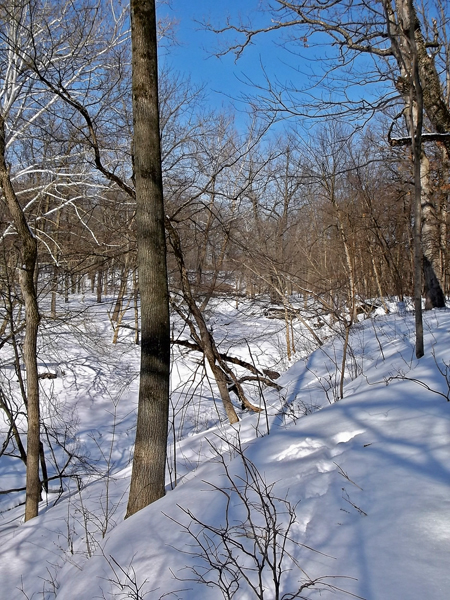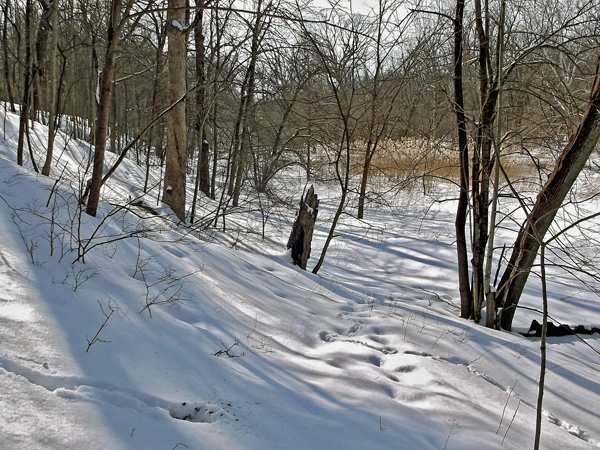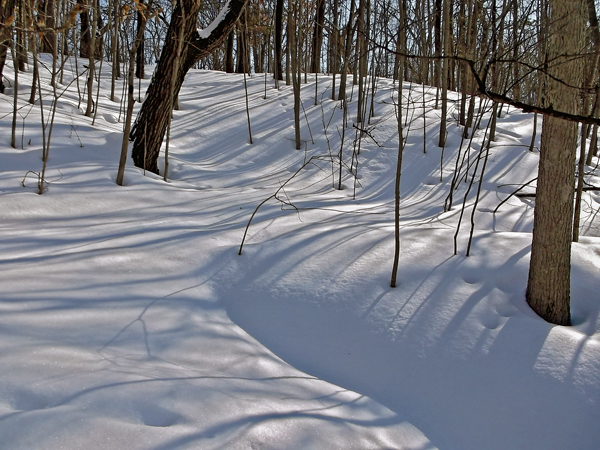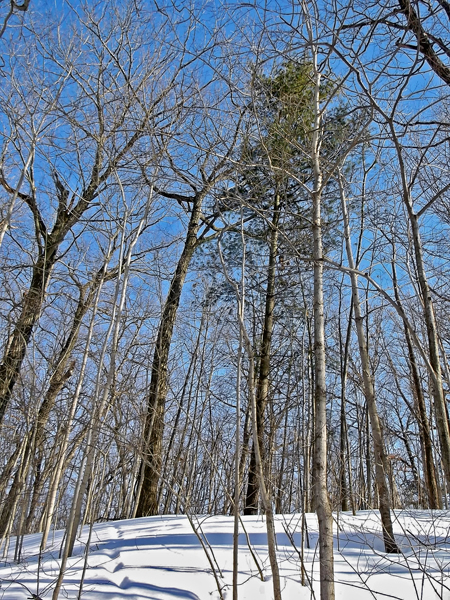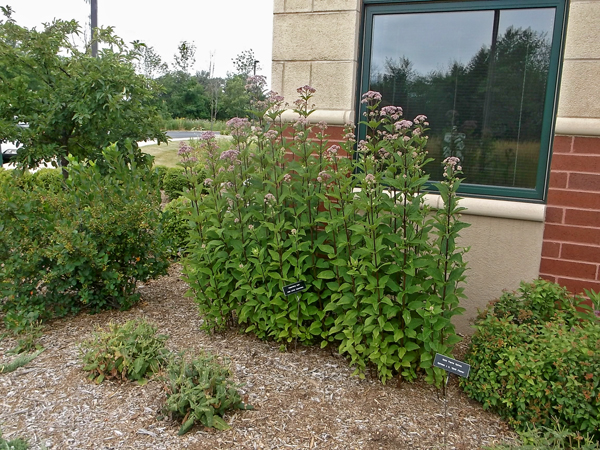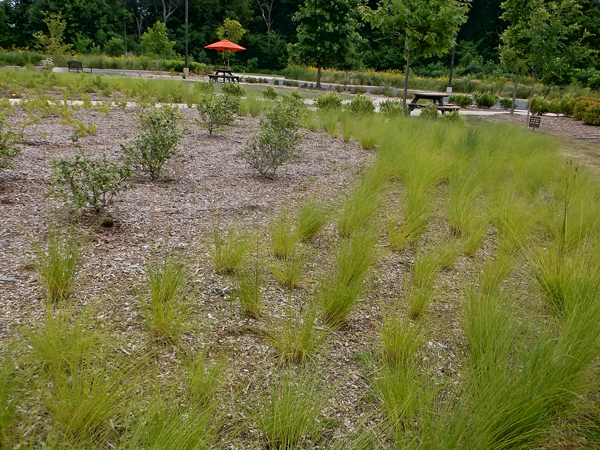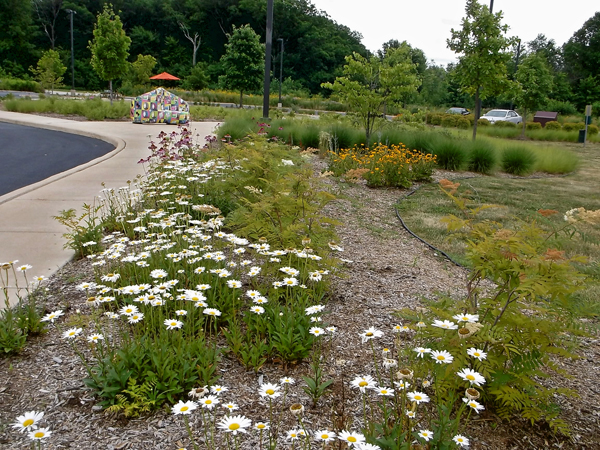Eight Weeks on
Having brought the potted amaryllis out of their basement dormancy in January, which you can read about here, and hoping for some blooms eight weeks later, I have to say, no such luck, but there are some buds at least:
The little pointed things (seen above), that look a lot like an emerging leaf, are actually the flower buds starting to push up. The one to the rear of the picture is on the bulb that was showing no growth after four weeks, mentioned here, now it’s the one with the biggest bud.
Over all, the plants are about 14 to 16 inches tall, but so far, only two flower buds.
Spring has Sprung, in a Wintery Kind of Way
I woke to a light snowfall on this first day of spring, but it didn’t last long, and the sun made its appearance with temperatures in the 40’s helping to melt the last of piles of snow. I could finally see the ground, so I went on walk to see what was happening on this fine spring day. Most of the plants are still in their winter dormancy, but a few things were starting to green up, including the daffodils in the perennial garden. Of course, the seed flats, planted to prairie and woodland seeds last fall, are not even thinking of showing any green – that may take another month or so.
The Switchgrass in the native plant garden is still upright, even after being smashed down by many snowfalls this winter, in fact the grasses shown below, were on the ground just last week, flattened by a wet, late winter snow.
The Prairie Dropseed grass didn’t fair as well, it never does. After the first heavy snowfall, this grass gets flattened and never bounces back, like the Switchgrass.
The little meadow will get a mowing in a few days time. I would burn it, but the small trees, mostly Red Oaks and White Pine, would not fair too well in a burn.
The Prickly Pear Cactus is also a bit sad looking at this time of year, but it will bounce back as the weather turns warm. The cactus is native to dry Midwestern prairies and does quite well in average garden soil – it is a spreader though, so plant it where that won’t be a problem, dividing a cactus is no fun. The can easily be propagated from one cactus pad stuck in the ground and left alone.
The Common Milkweed is still very showy at this time of year, its silver and bronze pods are catching the late afternoons rays. The milkweeds, of course, are necessary for Monarch butterflies to reproduce. Adults lay their eggs on the underside of the leaves of only milkweed plants, and the emerging larvae feast on the leaves, which makes them taste nasty to birds. No milkweeds, no monarchs. And monarch populations have dropped by 95% in the last ten years according to those who track that sort of thing.
Every year, it seems, I lose about 20% of my old apple tree. Last spring, I grafted a cutting (scion wood) from the mother tree onto a young volunteer apple seedling near the parent. All went well, and the graft took fine, but I did not think to put fencing around the young tree, and one evening a deer came by and pulled off the grafted scion. I’ll try again this year.
The Switchgrass in the meadow, really stands out from the other plants, both in color, and in being one of the few plants still standing upright at this time of year.
The fine texture of Switchgrass also contrasts nicely with the other plants surrounding it.
In the vegetable garden, the fall planting of garlic, is just beginning to show some growth:
The cloves planted in the fall of 2012 will be ready for harvest this July. It takes two growing seasons for the cloves to form nice sized bulbs of garlic, when the leaves go yellow and fall over, during the second summer of growth, it’s time to harvest and dry the garlic. If left in the ground, they will resprout and won’t store well. The regrowth from last year, survived the winter, with a bit of damage to the leaf tips.
Shallots, like the garlic are planted in the fall, September and October in zone 5, then covered lightly with some straw after the ground is frozen. The straw helps keep the ground frozen – not so much of a problem for this past winter of deep freeze temps. In a more normal winter, the bulbs could get pushed out of the ground if it thaws and refreezes repeatedly through the winter.
Geranium ‘Biokovo’, is semi-evergreen, and looks like it already wants to start regrowing. While, not a native geranium, this low growing plant makes a good massing groundcover for partly sunny areas in the landscape. It has good, light pink flowers in June, and some red fall color.
Some of the young oaks keep their leaves all winter, they’ll pop off as the new leaves emerge, if not before. This feature, makes the winter landscape a bit more dynamic than it otherwise would, and it works well to keep unwanted views screened even in dormancy. Hophornbeams (Ostrya virginiana) and Blue Beech (Carpinus caroliniana) will do this as well, making them a good hedge plants or screen plantings.
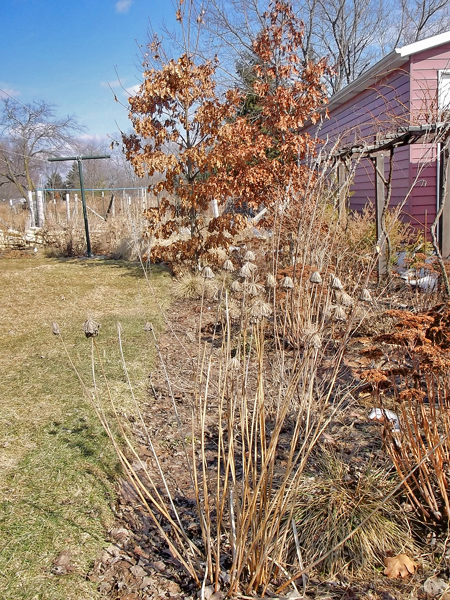
‘Pink Planet’ Allium may not be at its best at this time of year, but it still has “presence” in the late winter garden
Also in the perennial garden, along with the oaks, the ‘Pink Planet’ Allium and the Sedum ‘Autumn Joy’ still have character, especially the sedum – they would both look well with a planting of Switchgrass behind them from Summer right through winter. Next week, everything gets cut back or mowed down. Bring on the Spring and the warm weather that it brings!

